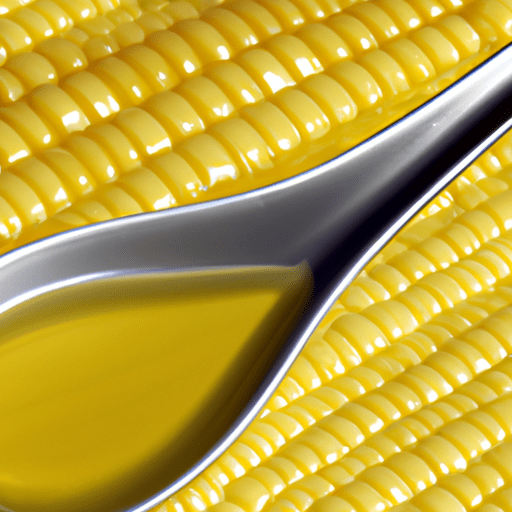All About Corn Oil: A Versatile Cooking Oil
When it comes to cooking oils, there are plenty of options to choose from. One such widely used and versatile oil is corn oil. With its mild flavor and high smoke point, corn oil has become a staple in many kitchens. In this blog post, we’ll delve into the world of corn oil, exploring its taste, common uses in cooking, nutritional value, and uncover some interesting history and facts about this golden liquid.
Taste and Aroma
Corn oil is known for its mild taste and aroma, making it an excellent choice for various recipes. Unlike some oils that tend to overpower the flavor of dishes, corn oil remains subtle and allows the natural flavors of other ingredients to shine. Its pleasant and neutral taste makes it ideal for everything from sautéing and stir-frying to baking and salad dressings.
Cooking Uses
Because of its high smoke point, corn oil is well-suited for high-temperature cooking methods such as frying and deep-frying. Its smoke point usually ranges between 450 and 470°F (230-240°C), making it a reliable option for achieving crispy textures while retaining the natural flavors of the food.
Apart from frying, corn oil can be used as a base for homemade mayonnaise, marinades, and salad dressings. It can add moisture to baked goods and help enhance the flavor of baked goods like cornbread, muffins, and cakes. Due to its versatility, corn oil has found its place in both sweet and savory recipes, adding a dose of richness and moisture.
Nutritional Value
Corn oil is not only a versatile cooking oil but also a source of essential nutrients. It is primarily composed of monounsaturated and polyunsaturated fats, including omega-6 fatty acids, which are important for maintaining heart health. While it does contain some saturated fat, it is lower than other commonly used oils like coconut oil or palm oil.
Additionally, corn oil is naturally cholesterol-free, which further contributes to its heart-healthy profile. It also contains Vitamin E, a powerful antioxidant that helps protect cells from damage. However, it’s worth noting that corn oil is high in calories, so moderation is key when incorporating it into your diet.
History and Fun Facts
Corn oil has a rich history that dates back centuries. It originated from the indigenous corn crops cultivated in the Americas. Native Americans were using a process called “wet milling” to extract oil from corn kernels. This ancient technique involved steeping corn in water and then grinding it to separate the oil. Today, the process has been refined, but the principle remains the same.
In the early 20th century, advances in technology made large-scale production of corn oil possible. This led to its popularity as a commercial cooking oil and its widespread use in households around the world.
Interestingly, corn oil is not only utilized in the kitchen but also finds applications in various non-food industries. It is often used in the production of biodiesel, soaps, cosmetics, and even some industrial products.
Conclusion
Whether you’re sautéing vegetables, deep-frying chicken, or baking a cake, corn oil is an excellent choice to have in your pantry. Its versatility, mild flavor, and high smoke point make it a go-to oil for a wide range of recipes. With its heart-healthy profile and nutritional value, it can be a smart addition to a balanced diet. So, why not explore the culinary possibilities of this golden treasure and elevate your cooking to new heights with corn oil?
Remember, as with any cooking oil, it’s essential to use corn oil in moderation and in conjunction with a balanced diet for optimal health benefits. Happy cooking!
References:
Corn Oil
Origin: Corn oil, also known as maize oil, is derived from the germ of corn (Zea mays). It is extracted through a process called wet milling, where the germ is separated from the rest of the corn kernel.
Common Uses: Corn oil is a versatile culinary oil that is used for various purposes. It is commonly used for frying due to its high smoke point, which means it can withstand high heat without breaking down. It is also used in salad dressings, baking, and as a general-purpose cooking oil. Additionally, it is a popular ingredient in the production of margarine and mayonnaise.
Nutritional Benefits: Corn oil is primarily composed of polyunsaturated fats, particularly omega-6 fatty acids. These fats are considered essential as they play a crucial role in maintaining healthy bodily functions. Corn oil is also a good source of vitamin E, which acts as an antioxidant in the body and helps protect cells from damage caused by free radicals. Furthermore, it contains phytosterols, which are plant compounds that may help lower cholesterol levels.
Unique Properties: One interesting property of corn oil is its high smoke point, typically around 450°F (232°C). This makes it suitable for various cooking methods, including deep-frying and stir-frying. Additionally, corn oil has a mild flavor that doesn’t overpower the taste of the food it is used to cook or dress.
Historical Significance: The use of corn oil can be traced back to Native American cultures, who were known to use maize for various culinary purposes. The extraction of corn oil became more widespread during the industrialization of agriculture in the early 20th century. Since then, it has become one of the most widely consumed vegetable oils in the United States.
Please note that while corn oil offers nutritional benefits, it should be consumed in moderation as part of a balanced diet, as excessive consumption of omega-6 fatty acids compared to omega-3 fatty acids may have negative health effects. Always consult with a healthcare professional for personalized dietary advice.




Use the share button below if you liked it.
It makes me smile, when I see it.